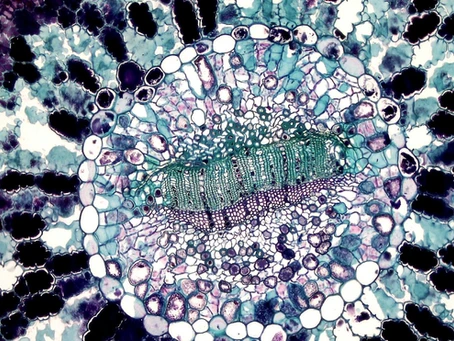Bringing art back to science: A tale of two art science programs
By Caroline Cencer
TL;DR: Artists and scientists are both inspired by observations and creativity – it is only natural for them to collaborate. I interviewed the founders of two art science programs on college campuses to get their take on the intersection of art and science. When art and science come together, curiosity and possibilities collide.
Why I chose this topic: Much of what I do as a research scientist relies on creativity. I was inspired by my institution’s art science program, ArtLab, to explore the similarities between science and art. I am passionate about using visual science communication to engage wider audiences regardless of educational background.
Nearly 400 years ago, Italian artist Francesco Stelluti published the first drawings from a microscope depicting a detailed bee. Shortly afterwards, in 1665, Robert Hooke published Micrographia with illustrations from his microscopes, revealing previously unseen structures to the world. In the early days of scientific exploration, scientists relied on detailed artistic renderings to depict the natural world; however, over the years, these illustrations have been replaced by advancements in camera technology. Such advancements permit scientists to study intricate organisms and processes, yet it is interesting to wonder whether art’s communication potential in science is untapped. Reflecting on research origins, could art enhance our ability to communicate science wonders?
Notably, and to my absolute delight, there has been a recent resurgence of art in science education, though it is still in its native stages. This growing initiative to use arts in education has led to the expansion of the familiar acronym STEM (Science, Technology, Engineering, and Math) to STEAM, with the addition of Art. This shift, pioneered by the Rhode Island School of Design, has even reached Capitol Hill where an annual STEAM fair now encourages girls to pursue careers in STEAM fields. Studies on learning and the arts continue to show that integrating visual art into science classrooms may help with memory retention and foster creativity. Similarly, several leading research institutions, including Syracuse University (Syracuse, NY) and Vanderbilt University (Nashville, TN), have recently developed programs dedicated to using art for science communication. Inspired by these initiatives, I reached out to the founders of two of these programs to get their take on the importance of the intersection of art and science communication.
ArtLab at Vanderbilt
Founded in 2017 by Kendra Oliver, Ph.D. at Vanderbilt University (Figure 2), ArtLab exists as an “epicenter for design, visual science communication, and science outreach.” Through ArtLab, Dr. Oliver has organized public gallery exhibits showcasing science-inspired art (Figure 1) and established a visual science communication summer program called Artist-in-Residence, which pairs artists with research scientists on campus.
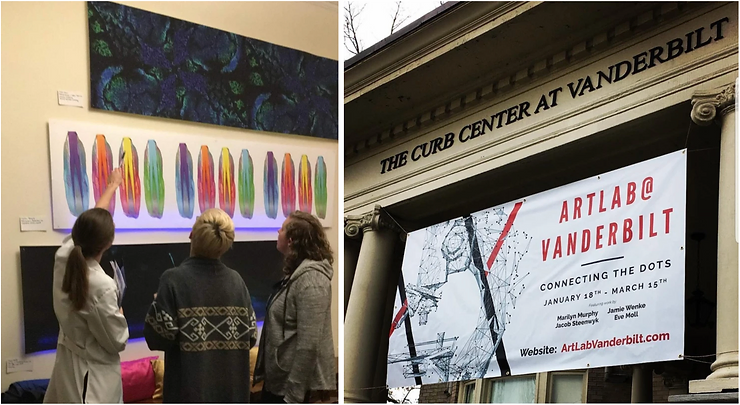
In an interview with Dr. Oliver:
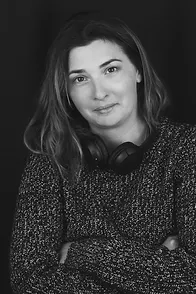
Q1: What first inspired you to create an Art Science program on your campus?
A1: I worked with high school and undergraduate students in the Aspirnaut program and realized that we were learning science together by drawing images. I was so impressed by the talent of these students’ visual abilities and how well they worked to communicate concepts that I decided to create an event for the entire science community at Vanderbilt to showcase their artistry. This first exhibition led to me developing workshops, fellowships, grants, and programs around visual science communication and art science.
Q2: How have you seen the world of Art Science grow and change over the past 5+ years? Where do you see it going in the future?
A2: Art Science has always existed, but a structure and space to co-create were not always possible within the larger, modern academic ecosystem. Art needs to integrate into the fabric of science. People are starting to see the value in transdisciplinarity to inspire creativity and new ways of thinking.
Q3: What has been your favorite thing about running an Art Science program?
A3: Being involved with an art-science program is play, and running programs about art science allows other people to play with me. Seeing creative people synergize and create something more significant than the parts is truly inspirational.
The Bio Art Research Coalition of Syracuse
Established in 2018 at Syracuse University by Heidi Hehnly, Ph.D. and Boryana Rossa, Ph.D. (Figure 4), The Bio Art Research Coalition connects artists and scientists to share research and initiate cross-disciplinary conversations, fostering future collaborations. The program hosts Bio-Art Mixers, featuring short lectures from scientists and artists, audience Q&A, and informal discussion. In 2019, the artist-in-the-lab residency program was introduced, and in 2022, the “Chimera” exhibition program was launched to display science art across the university (Figure 3).
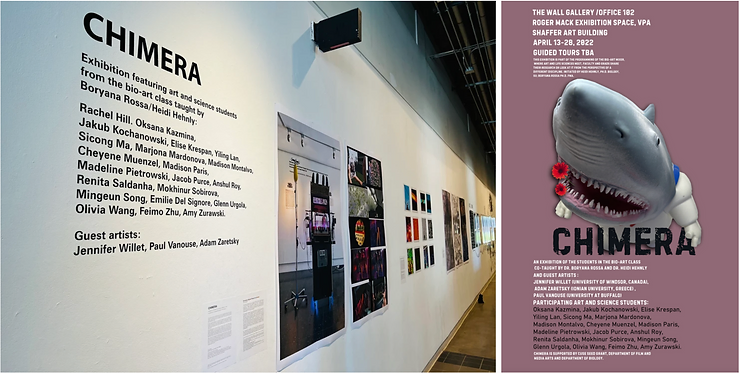
In an interview with Dr. Hehnly:
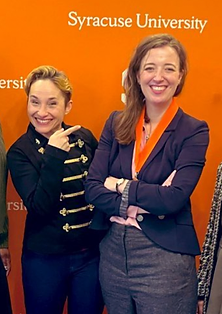
Q1: What first inspired you to create an Art Science program on your campus?
A1: I have always been eager to share my love of science and art with my students, and to make connections between the two, but before coming to Syracuse, the possibility of bridging my love of science with my artistic interests did not seem to exist. It is through these interdisciplinary efforts that student education can extend beyond their traditional and sometimes confining silos. I hope to impress upon my students that liberating ourselves from our own preconceptions and looking beyond presumed boundaries can reveal novel insights in whatever field we choose to pursue.
Q2: How have you seen the world of Art Science grow and change over the past 5+ years? Where do you see it going in the future?
A2: I’m so impressed with the BioArt community in NY that has been thriving long before Boryana and I started the Bio Art Mixer. I think there is room to grow in the arena of Bio Art, which is different from Science Art. Bio Art is a practice that uses living organisms and life processes as an artistic medium or inspiration, where Science art is presenting information to the viewer from a scientific standpoint in a visually appealing way. I hope that we can grow where scientists and artists are more collaborative, where artists are incorporated in the lab with their own projects that influence the ideas of the scientific projects that are ongoing.
Q3: What has been your favorite thing about running an Art Science program?
A3: The students are my favorite part of BioArt. Working with artists in the lab and in the classroom, makes me remember why I got into science – which was to find something beautiful and unique, and then share it with everyone. I think every school should have some sort of Bio Art programming, but we need to have a collaborative environment to do it well. As scientists at academic institutions, we should embrace the humanities and not only welcome them into our spaces but ask to join theirs.
Final Remarks
By examining the achievements of art science programs, such as those highlighted in this article, we can find inspiration for the future of visual science communication. The fusion of art and science offers a fresh perspective on presenting scientific data. With art serving as a universal language, diverse communities can gain a deeper understanding of research outcomes, regardless of their educational backgrounds. By blending research findings, quantitative data, and artistic elements, science communicators can bridge the gap and captivate a wider range of viewers.
Edited by – Mahima Samraik and Kay McCallum
Cover image credit: Fayette Reynolds, M.S. (Pexels)

